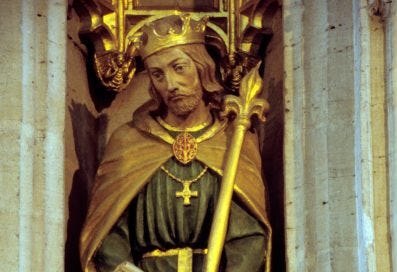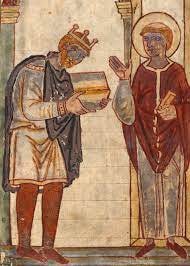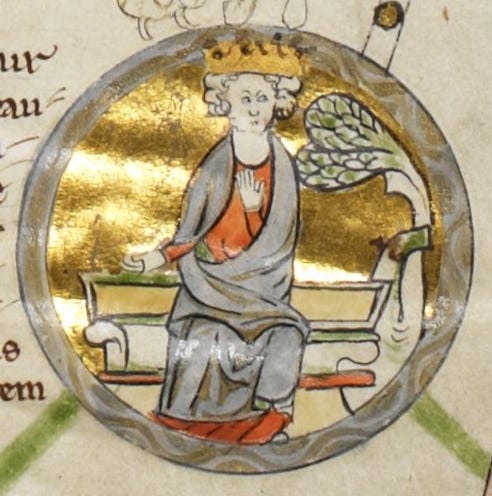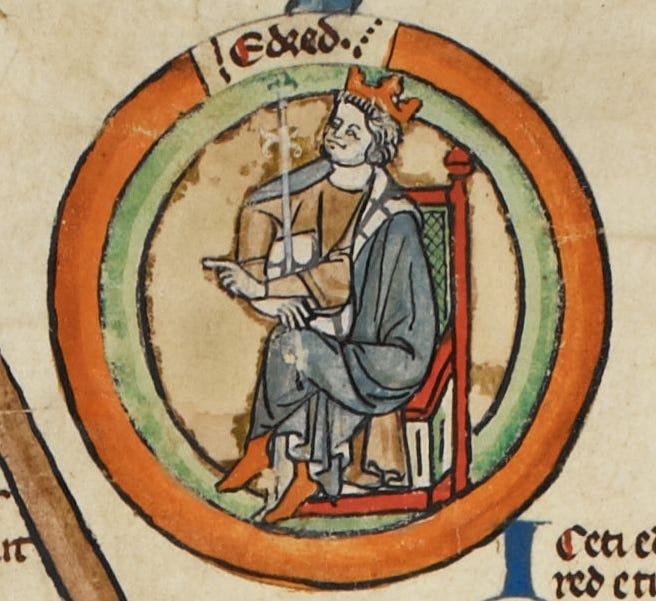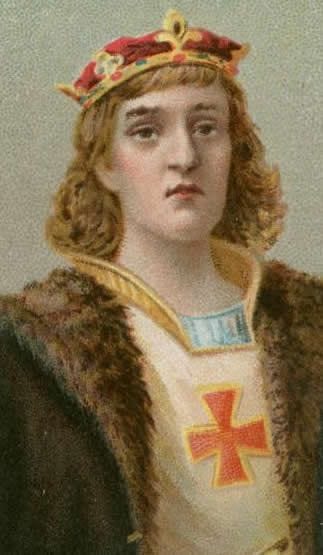In a previous piece, I reviewed the Stuart monarchs of England, Scotland and Ireland, from 1603-1714 AD.
In this article, I’ll go over the Anglo-Saxon monarchs, from the time of England’s formation (927 AD) to the reign of Edgar the Peaceful.
Akin to the Stuart piece, I’ll be reviewing these sovereigns on the following categories:
- Foreign policy/warfare
- Political stability
- Law-making/administrative skill
I will mark them all out of ten accordingly.
Athelstan
r - 924-939 AD (927-939 AD as King of the English)
King Athelstan is widely regarded the first king of England, and one of the greatest monarchs of the Anglo-Saxon and wider medieval period. After succeeding his father, King Edward the Elder, in 924 AD as King of the Anglo-Saxons, he conquered Norse Jorvik (modern-day York) and proclaimed himself King of the English at Eamont Bridge in 927 AD. He was the first king ever to that point to rule all of the Anglo-Saxon lands as the sole sovereign. He thus had fulfilled the dream of his grandfather, King Alfred the Great, which was expanded upon greatly by his children Lady Athelflead of Mercia and King Edward the Elder.
Athelstan is also noted for the skill of his law-making, piety to the church, his invasion of Scotland in 935 AD, and the Battle of Brunanburh in 937 AD. The site of this battle is unknown, though it saw Athelstan’s new kingdom united against the combined forces of the Kings of Scots, Dublin, and Strathclyde. With the English being victorious, it cemented this new found unity, and reinforced the overlord bonds that Athelstan had placed on the Scots and Strathclyde kingdoms.
Foreign policy/warfare, political stability, law making/administration - 10/10 in all areas
Yes, I am biased. I didn’t name my blog after King Athelstan for nothing.
But Athelstan wasn’t just great for his founding of England as a singular kingdom. He embodied many of the virtues of his esteemed grandfather King Alfred the Great, and epitomised the standard of medieval kingship. He was strong in battle, made good laws, and upheld the church, and thus espoused the very notion of medieval rulership.
His great victory at Brunanburh also saw him defeat the Scots, Strathclyde Welsh, and Dublin Norse, and helped shape and unite the fledging united England.
Athelstan has become a forgotten king, and given his status as England’s first king, this alone is a historical injustice.
Edmund
r. - 939-945 AD
Athelstan died in 939 AD without born issue/children.
He was succeeded by his half-brother, King Edmund, who was also the father of King Edward the Elder, and a grandson of King Alfred the Great.
With the great king Athelstan now deceased, Edmund’s role in succeeding his brother was marked by conflict, and the securing of the newly united kingdom of all the English.
The Five Boroughs of the Midlands - Norse army camps at Leicester, Derby, Nottingham, Stamford and Lincoln respectively - seceded from the new English union. This was supported in part by the kingdom of Jorvik, which had briefly reasserted itself in the immediate post-Athelstan era.
His reign of seven years from 939-946 AD was spent in attempting to reconquer the Five Boroughs, and ensure the unity of the new Kingdom of the English - or England.
Foreign policy - 5/10
Edmund sustained the overlordship treaties imposed by his sibling, Athelstan. The Welsh, Strathclyde Welsh, and Scots, were largely kept in line under his rule.
Law/administration - 6/10
King Edmund maintained the laws of Athelstan, enabling him to focus solely on the reconquest of the Five Boroughs.
Political stability - 5/10
Edmund isn’t as celebrated as his brother Athelstan, though he did his part in the establishment and longevity of the English kingdom. At the end of his life, where he was murdered in a tavern in Pucklechurch, the Five Boroughs had been restored under English rule.
Edmund has gained the epithet “the Magnificent”, in part since he successfully restored his dominion over the Five Boroughs.
Eadred
r. 945-955 AD
After Edmund’s death in 946 AD, the youngest half-brother of Athelstan (and full brother of Edmund), Eadred, became king.
Like Edmund, his reign was defined largely by conflict.
Edmund had secured the rule of the Five Boroughs - it was now Eadred’s turn to recover and subdue a rebelling facet of his kingdom. This time, it was Jorvik, and more specifically the rule of Eric Bloodaxe.
Eric was king of Norway, and a son of Harald Finehair, the first king of Norway. Due to his cruel rule, he was ousted as king and exiled.
The denizens of Jorvik - whether ethnic Norse or Anglo-Saxon alike - didn’t tolerate being part of an English kingdom ruled by a Wessex king. With Bloodaxe seeking a kingdom to govern, they readily sought him out as their new ruler.
After several battles going back and forth between Jorvik and the English, Bloodaxe eventually fell at the Battle of Stainmore in modern-day Durham/Cumbria. A force of English under Eadred defeated Bloodaxe, and finally made England whole.
Foreign policy - 4/10
The major focus of Eadred’s reign was his reconquest of Jorvik. Little else occurred to negatively impact things from an external standpoint.
Law/administration - 4/10
Akin to foreign policy, the prime focus was in regaining Jorvik. The laws of Athelstan/Edmund were kept in place.
Political stability - 7/10
Eadred isn’t as widely known as his half-brother, Athelstan. But like his full brother, Edmund, he ensured that England would remain whole. There would be splits in the kingdom in the future - though chiefly between rival kings or claimants. For the remainder of the Anglo-Saxon period, no formerly independent sub-section of England would rise up again.
Edwy
r. 955-959 AD
Edwy succeeded Eadred in 955 AD. He was an elder son of King Edmund, though unlike his father, his reign didn’t hold up as illustriously.
A prominent story from Edwy’s reign is his illicit relationship with a low-born woman. Prior to an important Christian service, he was said to have been found eloping with her, to the disgust of the noted St. Dunstan (an Archbishop of Canterbury) who caught him.
This was only the tip of the iceberg, however. Numerous other incidents caused ire amongst the nobility and clergy, leading to some to support Edwy’s younger brother Edgar as king.
To avert civil war, the kingdom was split between Edwy and Edgar. Upon Edwy’s death in 959 AD, Edgar became the sole king of the English.
Foreign policy, law/administration, political stability - 2/10
Following Athelstan, Edmund, and Eadred was going to be a hard task. Though Edwy didn’t help himself, leading to a potential civil war.
In part 2, we’ll look at kings Edgar the Peaceful to Cnut the Great.
